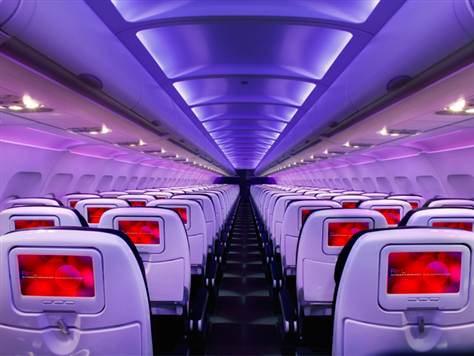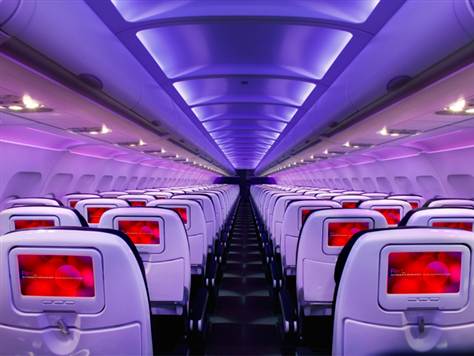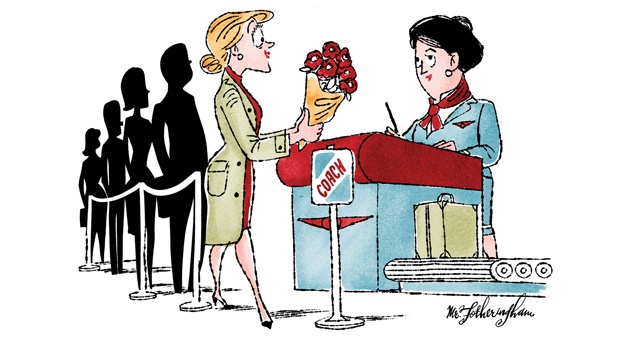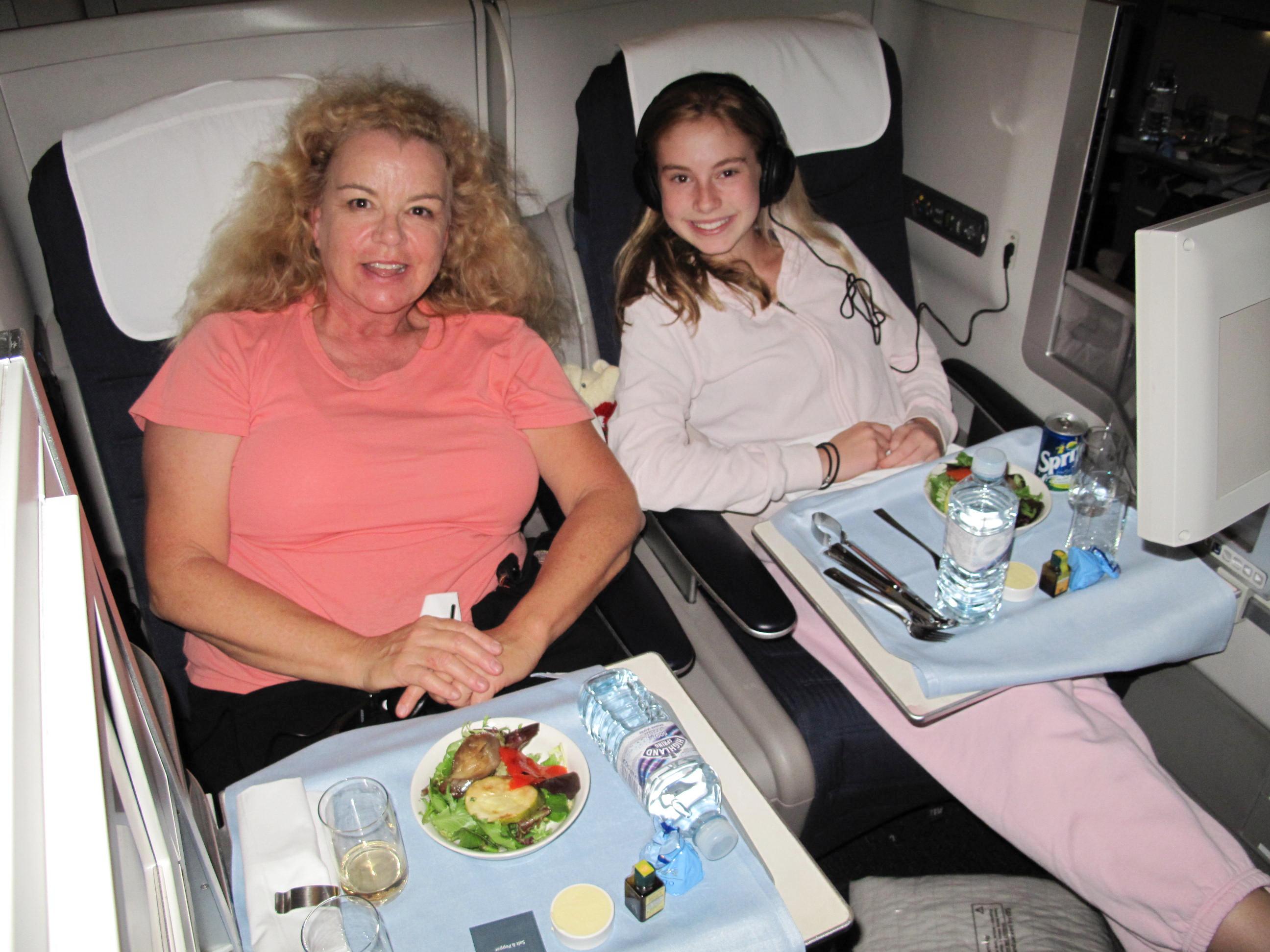Sit back and enjoy a movie at 35,000 feet
 High-backed comfortable chairs, surround sound, cup holders built into the armrests, extra leg room, “black box” screen aspect ratio … these are just some of the amenities offered in the modern state-of-the-art motion picture palaces.
High-backed comfortable chairs, surround sound, cup holders built into the armrests, extra leg room, “black box” screen aspect ratio … these are just some of the amenities offered in the modern state-of-the-art motion picture palaces.Airlines, of course, offer none of that.
In fact, as human experiences go, watching a movie on an airplane is generally considered to be as entertaining as reading the SkyMall catalog for the third time. It’s just there, like the “Occupied” signs on the lavatories and the occasional updates from the pilot over the P.A. system.
But is it really that bad? Does flick-watching on a plane get a bum rap? If you’re a movie buff and you haven’t yet seen, say, “The King’s Speech,” should you see it on a plane, or wait for a more satisfying experience in a theater or at home?
Naturally, the answers are complicated, with as many variations as there are airlines, airplanes, categories of seating, domestic and international flights, and films.
From VHS tapes to seat back screens
“The overall experience of watching a movie in a plane has gotten better and better,” said frequent flier David Taylor, an auditor from Arlington, Va. Taylor is a Platinum Medallion member on Delta, and estimates he flies 75,000 to 100,000 miles per year, mostly on Delta and Air France.
“A huge theater it is not and will never be,” he said of airplane cinemas, “but we’ve gone from overhead VHS tape-quality screens to on-demand individual screens with tons of options. The ability to pause the movie, adjust volume and screen brightness all adds to the enhanced experience. The premium headsets that Delta stocks in the premium cabins are really improving the experience by shutting out engine noise, snoring and other general noises in the cabin.”
The cinematic situation on a plane is not uniform. Some airlines still have the old drop-down mini-screens to serve the side rows, and a “big” screen in the middle. But many, especially those that fly internationally, have individual screens for each seat. And on those, there are often many choices of films. A passenger can watch “The Social Network” while his or her young child catches “Toy Story 3” in the adjacent seat.
JetBlue and Virgin America are frequently recognized as leaders in in-flight entertainment.
Inc. magazine, for example rated Virgin America tops for in-flight entertainment, citing each seat’s ” 9-inch wide touch screen featuring 18 channels of live television from the Dish Network and 25 on-demand movies you can pause, fast forward, and rewind.”
“We carry a lot of content, from Oscar winners and nominees and what’s popular at the moment,” said Abby Lunardini, director of communications for Virgin America, which launched in 2007 and expects to be in 15 cities by the end of this year. “We have documentaries, foreign films, an eclectic mix.”
Older carriers upgrade offerings
Virgin America and JetBlue are newer carriers. Along the old guard, Delta is expanding its offerings and upgrading its amenities. Chris E. Kelly, spokesperson for the airline, said there are now individual TV screens on more than 100 of its 728 aircraft on all seats, and on its more than 160 international planes Delta hopes to have individual screens on all seats by 2013.
“On the individual screens, we usually offer more than 20 films,” she said. “We want to have offerings for a nine-year-old kid as well as a businessman as well as a mom.”
Still, the dreaded drop-downs remain prevalent, which often means uncertainty.
“One of the reasons people like Virgin America and JetBlue is because there are consistent offerings on their planes,” noted Jason Clampet, senior online editor for Frommer’s. “You never know for instance if you’re flying United from L.A. to New York if you’re going to get an old plane or a new one, a little extra leg room or if its still a configuration from 1988. That’s the same with entertainment offerings — will you get a screen that’s hanging from the ceiling seven rows up, or an individual screen on a seat back?”
There is also the quality to consider beyond screen placement and size. Airlines typically will announce to passengers before a film is shown that it has been edited.
Editing films for in-flight viewing is not a matter assigned to a board of censors or a team of scrupulous cutters. It usually isn’t that big of a deal. Each airline tends to make independent decisions based on the tastes and sensitivities of its passenger base. Usually an airline that plans to show one film to the bulk of its audience via drop-down screens or big screens will choose content that is appropriate, rather than something that needs heavy editing.
Any editing of those films is usually for length, or for the occasional saucy scene or racy reference. Screens on individual seat backs that provide private viewing to each passenger tend to require little or no editing at all.
Rated R? Make that PG-13
Even on seat backs, there can be edits. “I watched ‘The Usual Suspects’ on a seat back once,” Clampet recalled, “and I remember thinking, ‘There’s a lot less cursing in this than I remember.’ ”
But Alireza Alivandivafa has had the opposite experience. A lawyer from Los Angeles, he said he flies approximately 100,000 miles a year, mostly between L.A. and either Toronto or Buffalo. Although he flies mostly US Airways, he has also traveled on Delta, JetBlue and others.
“I saw ‘Traffic’ on a US Airways flight in 2001, I think, and it showed everything,” he said. “It showed when Erika Christensen was (expletive) her drug dealer for more drugs. It didn’t sanitize any of the language.”
Like many frequent fliers, Alivandivafa uses flights to catch up on movies he has missed, and generally welcomes the in-flight entertainment experience.
“I actually think it’s a good idea to wait and see a movie on a plane,” he said. “There are lots of movies that people might consider rentals, or that passed them by in theaters, and seeing those on an airplane is the best way to do so. For instance, I really wanted to see ‘Julie & Julia’ and didn’t get a chance in theaters, but was able to catch it on a plane. Same with ‘The A Team.’ ”
In-flight entertainment should also improve in coming years. More airlines could eventually feature individual TV screens on seat backs on all their planes as many of the legacy carriers transition from older jets to new. And new innovations should develop: Virgin America is already planning to offer USB drives on its seats, so passengers can load their own entertainment content and watch it on the individual screens.
For right now, frequent flier David Taylor will gladly take whatever movie they he can get on an airplane.
“With two kids, the only free time I have to watch movies is typically on a plane.”


